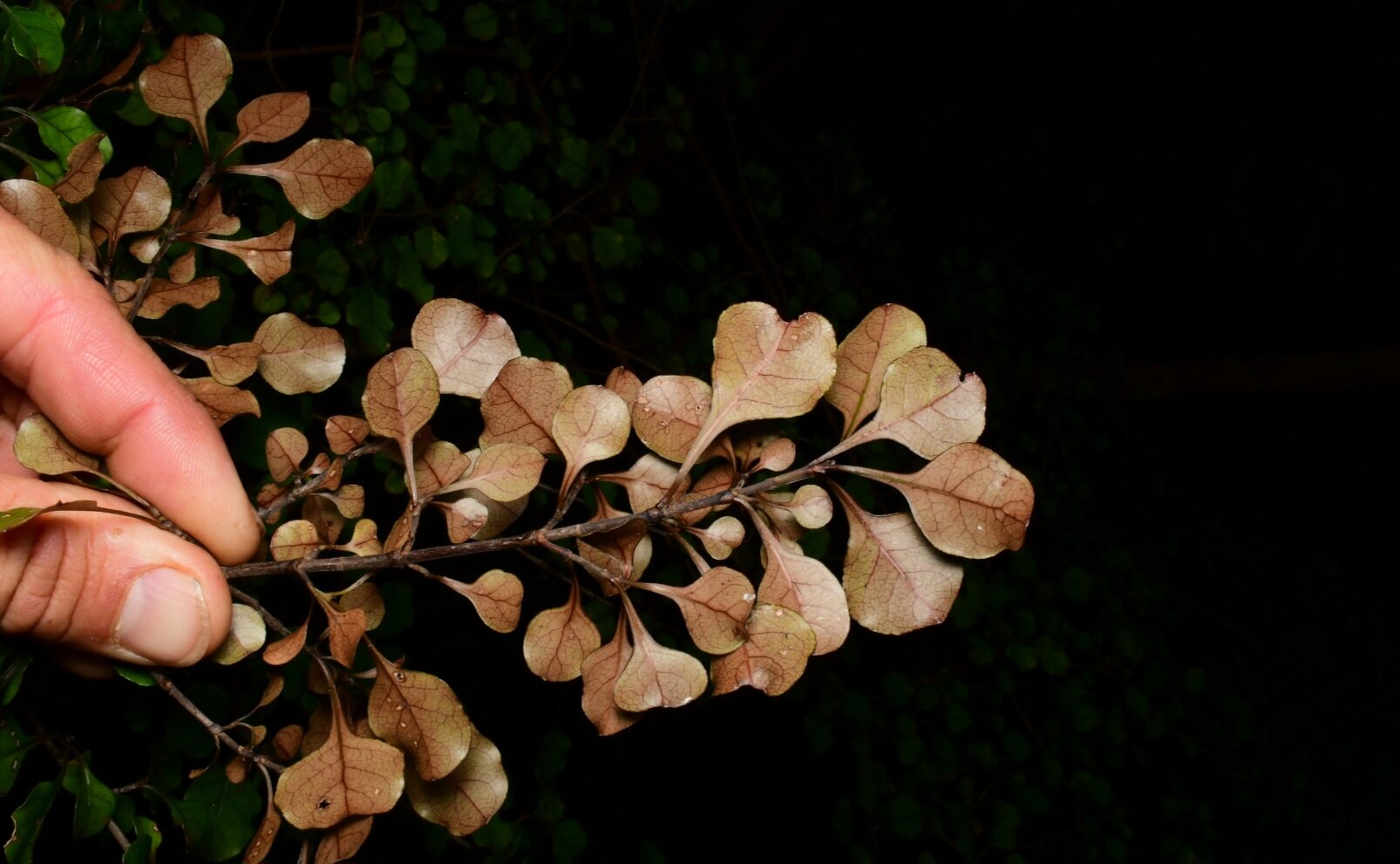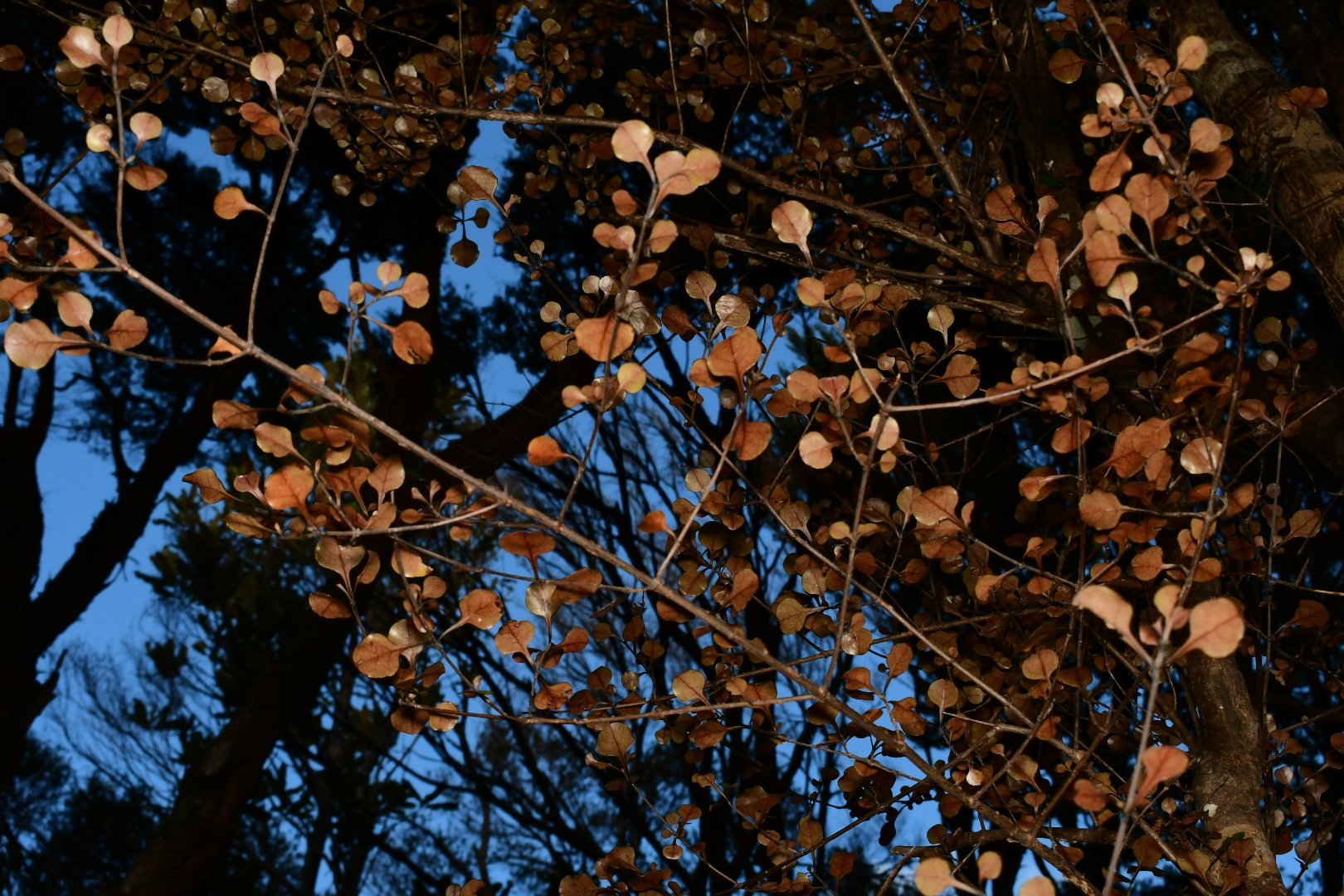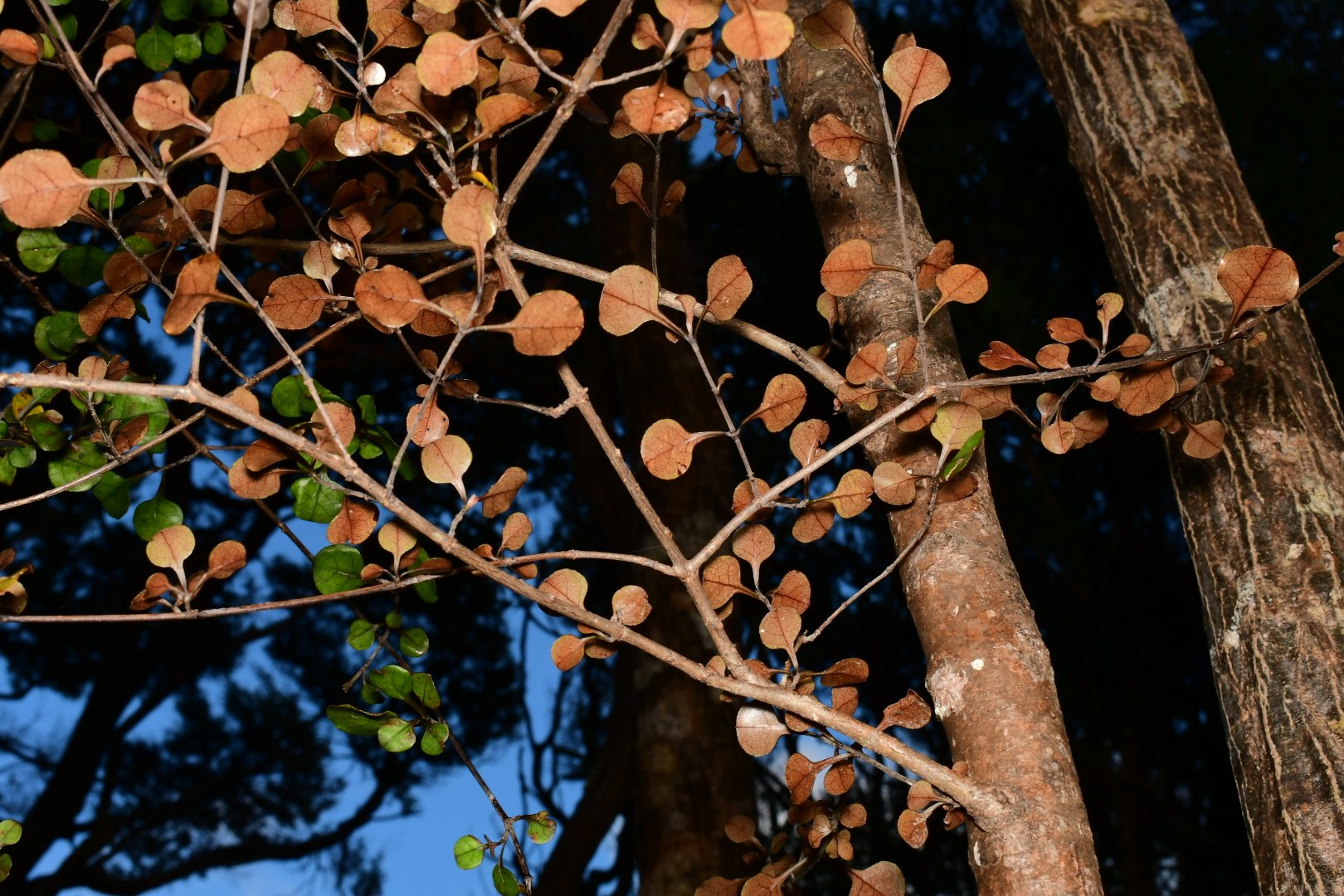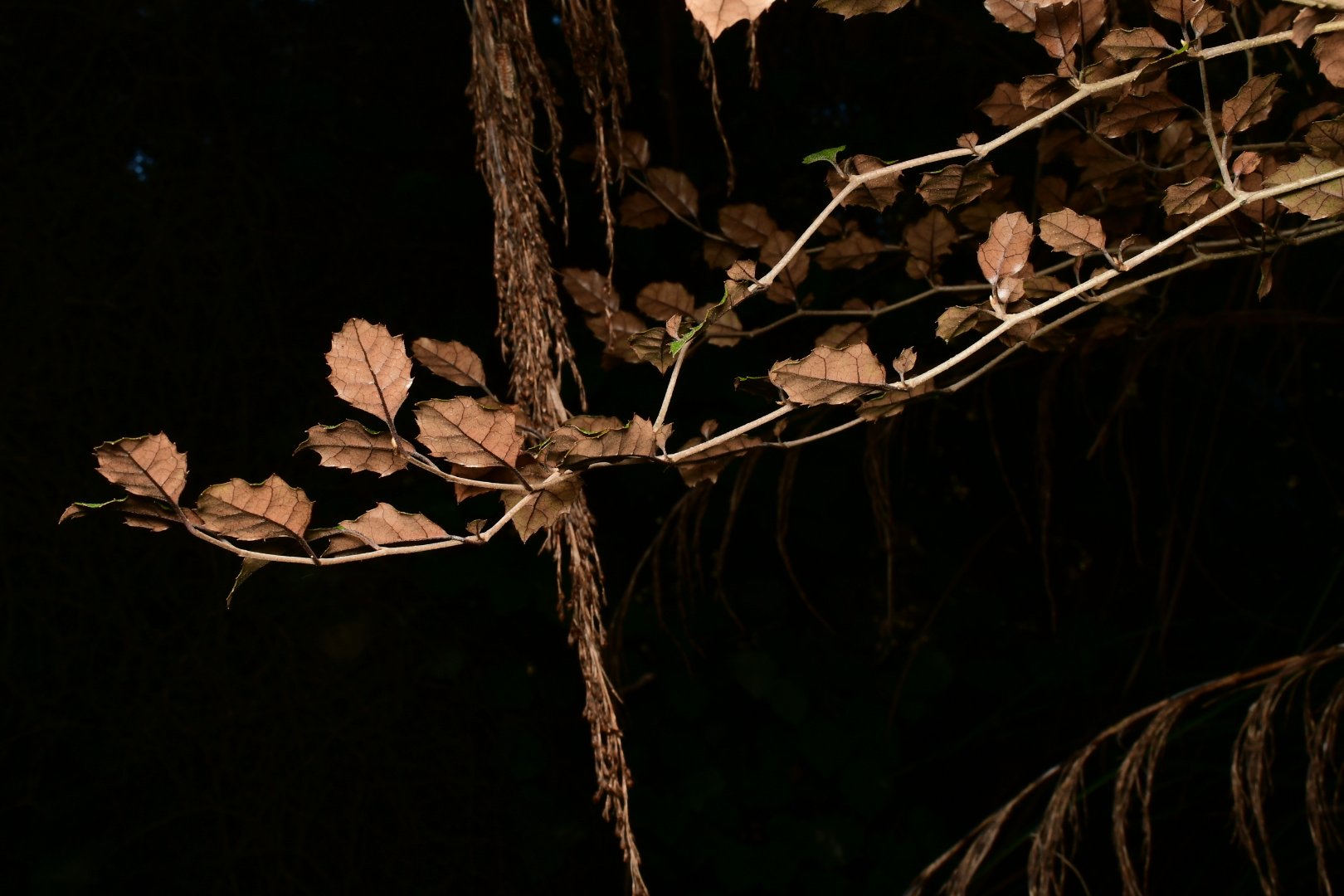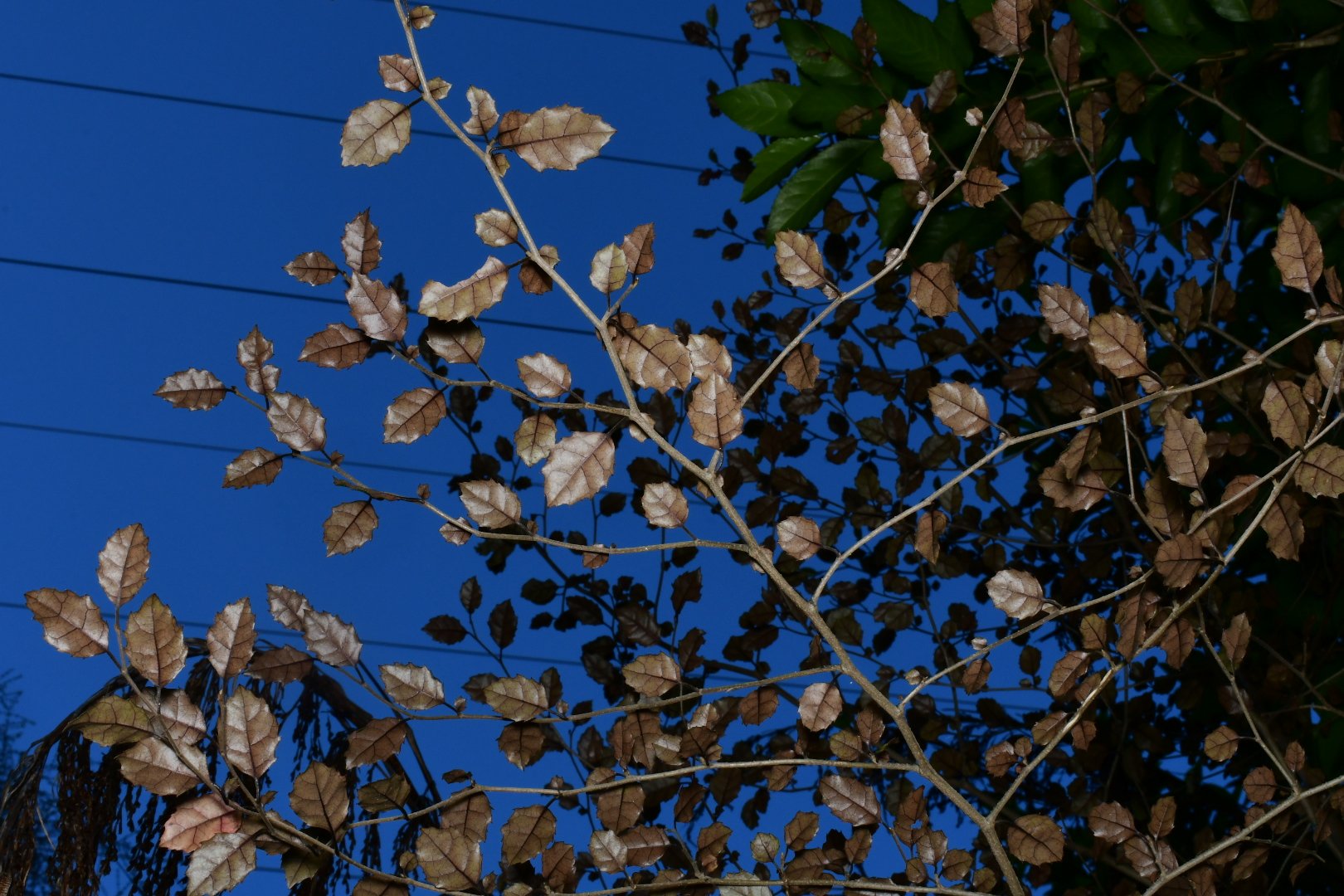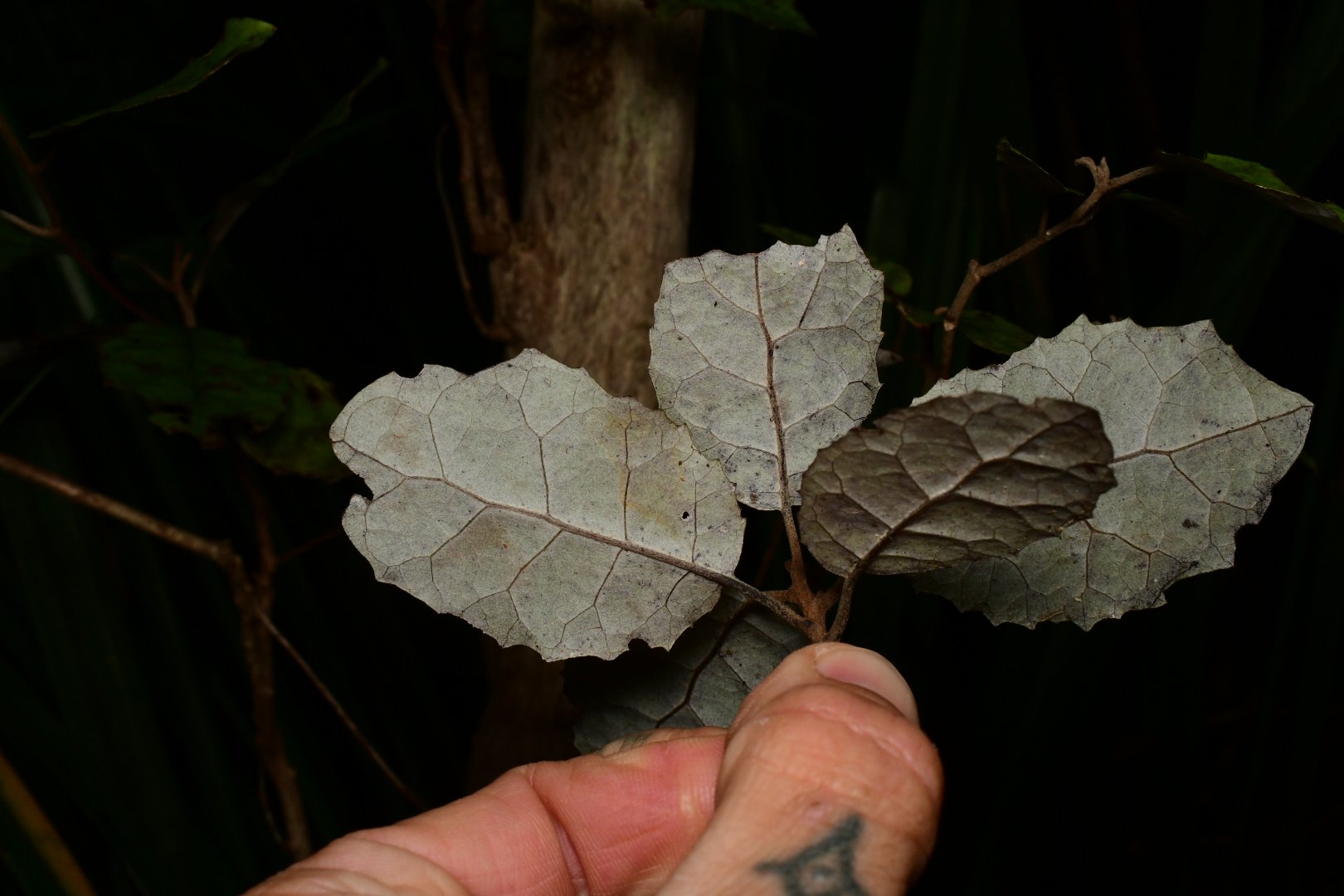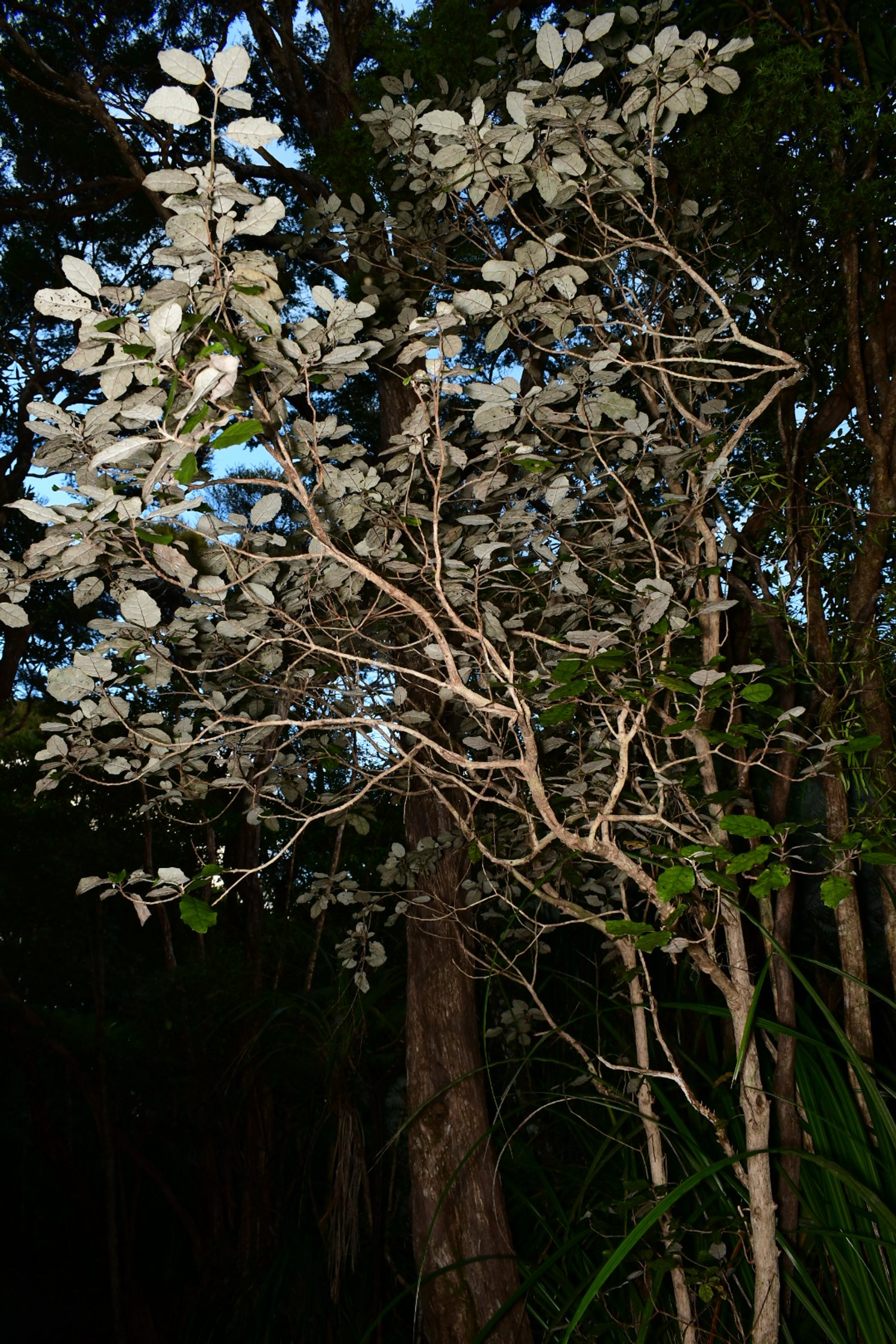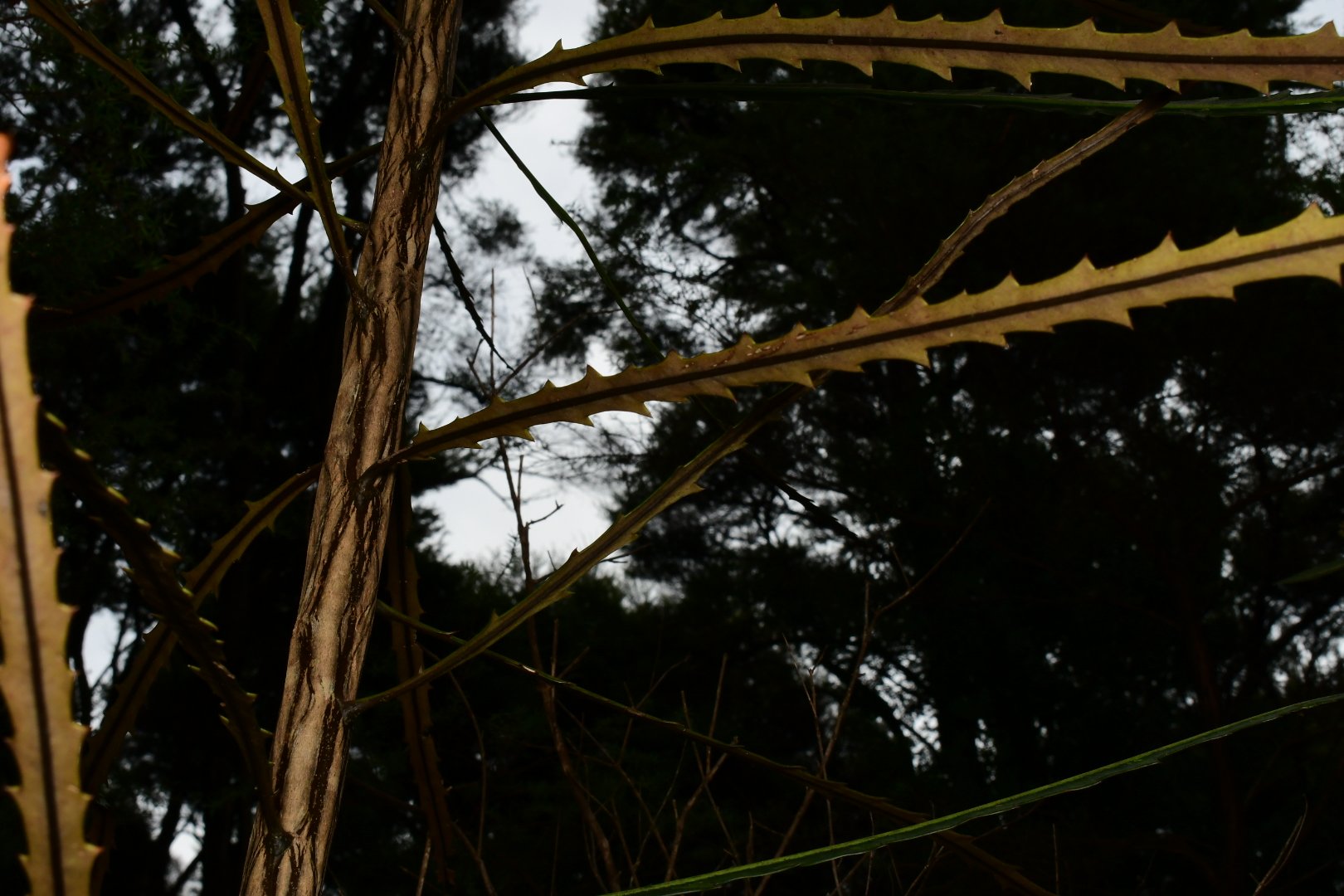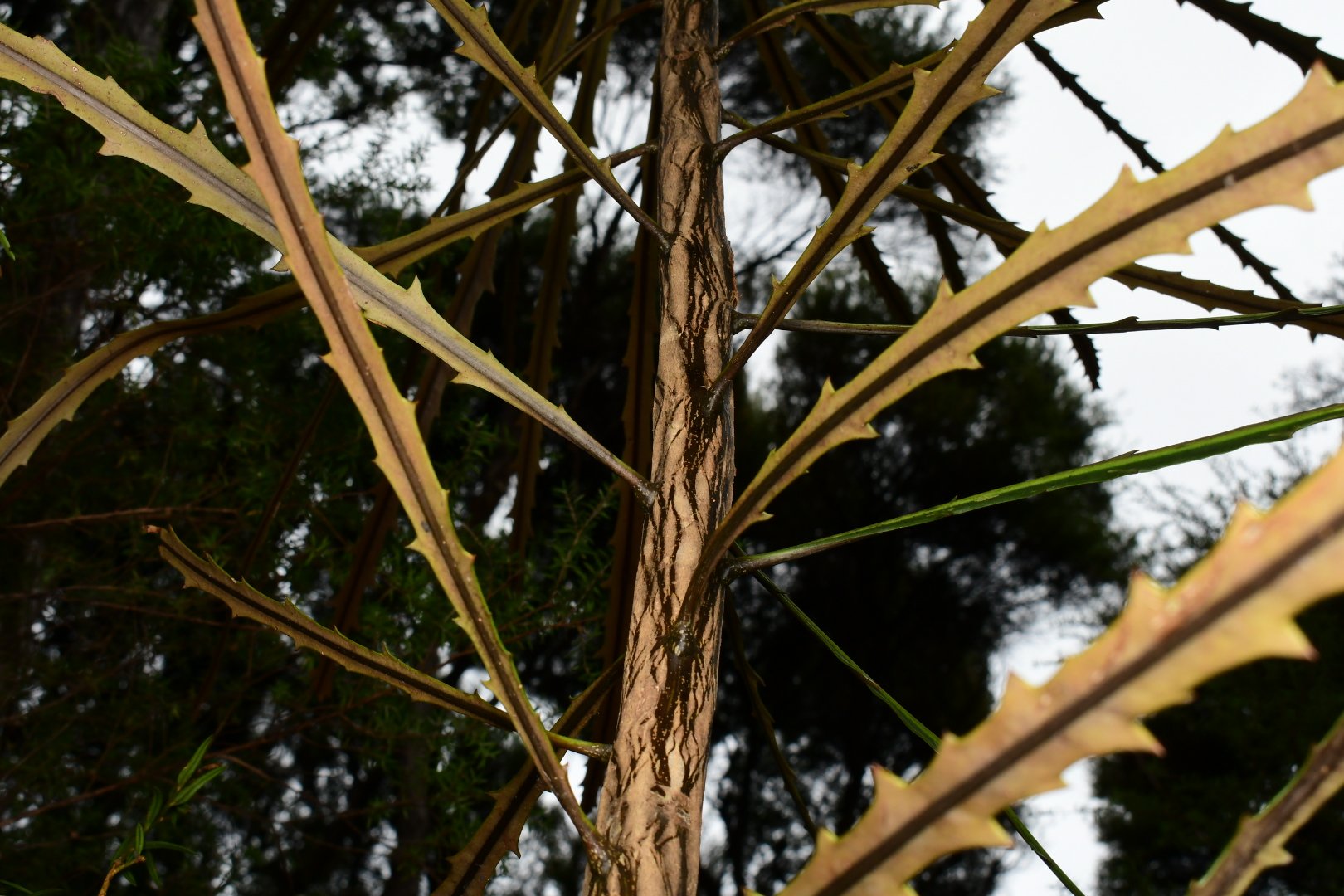New Zealand Botany: the convergent trait of RUSSETY Bronze leaf Undersides
More f*cking pictures of leaves...
But trust me, this is really cool.
Another trait I noticed among unrelated plants in New Zealand was bronze leaf undersides among a few of the plants there, most of them all "small" forest understory trees.
I noticed it first in Coprosma arborea, a wind-pollinated member of a very ubiquitous and species-rich genus in the coffee family, Rubiaceae. Not only did it look really cool,but it was extremely peculiar. Olearia rani, a member of the sunflower family, does the same thing. Carpodetus serratus, a small tree in the family Rousseaceae - same thing.
These subtle dark tones & bronzing made the leaves appear incredibly dark & indecipherable when viewed from below. I only noticed it because it was an absolute pain in the ass looking up to photograph them trying to decipher where the leaves were. It made the leaves appear incredibly dark. Then I started seeing it in a few different places & unrelated taxa.
When plant evolution seems to be repeating itself in a unique fashion in a particular location or environment, it is rarely ever coincidence. Carpodetus serratus, a little-known member of a family called Rousseaceae in the sunflower family order, Asterales, does the same thing (and also produces zig-zag, divaricate branching - see 2 posts back).
What could be selecting for bronze leaf undersides and what the hell would bronze leaf undersides do, anyway?
Then I remembered what a pain in the ass it was to photograph these leaves. The dark bronze tint to these leaves made it very hard to see them when I was trying to photograph them while looking up from the dark understory of a shaded forest. Could this to be a now-unnecessry adaptation to Moa? Hard to prove, of course, and there are no studies or research papers investigating it, but it seems highly plausible.
Zig-Zag branching (divarication), obvious differences in juvenile/adult leaf shape (heteroblasty), dark leaf undersides...
I love thinking about this kind of stuff. It is so fulfilling & almost somewhat beautiful - philosophically speaking - to see the living, vestigial result of what must have been an evolutionary arms race millions of years in the making.

